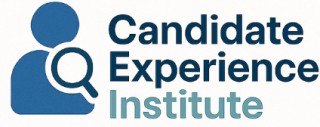
Understanding Human Resource Accounting
Grasping the Core Concepts of Human Resource Accounting
Human Resource Accounting (HRA) is a practice developed to measure the value of an organization's human resources, often referred to as human capital. Unlike traditional accounting, which focuses on tangible assets, HRA emphasizes the importance of employees as valuable and measurable assets of an organization. By using HRA, organizations can allocate resources more efficiently, improving organizational performance in the long term. Traditionally, accounting has concentrated on financial costs and resource allocation, often overlooking the cost method that involves the costs of hiring, training, and developing human resources. HRA redefines this perspective, placing emphasis on the need to account for the costs associated with recruitment, training, and development. Benefits of understanding and implementing resource accounting include:- Informed Decisions: By having a clear understanding of human costs, organizations can enhance resource management and make better, informed decisions regarding allocation and utilization of human resources.
- Performance Evaluation: Organizations can measure employee performance and its impact on organizational outcomes more effectively.
- Development Focus: Insight into human capital expenditures allows organizations to prioritize training development for employees, which can significantly enhance both individual and organizational performance.
Enhancing Candidate Experience Through Accurate Valuation
Refining the Candidate Journey Through Precise Evaluation
For organizations looking to enhance their candidate experience, the accurate valuation of human resources plays a pivotal role. When evaluating potential employees, the application of Human Resource Accounting (HRA) is crucial for assigning a tangible value to human capital within an organization. This approach goes beyond traditional cost methods by emphasizing the long-term benefits and contributions of employees.
Implementing HRA in recruitment allows organizations to allocate resources more effectively. By understanding the cost associated with recruitment, training, and development, companies can make informed decisions about how they nurture and develop new hires. This aids in crafting a candidate experience that aligns with the organization's financial and performance goals.
Moreover, a better grasp of resource accounting can lead to improvements in other human resource management areas. An informed approach to resource allocation ensures that employees receive appropriate training, resulting in enhanced employee performance and organizational performance. As organizations become more adept at these practices, not only do they improve recruitment processes, but they also drive positive outcomes in workforce management.
A precise understanding of the capital tied to the human element encourages organizations to prioritize the employees' role in achieving their strategic goals. By valuing employee contributions accurately, organizations foster an environment that amplifies the overall candidate experience and supports long-term organizational success.
Measuring Employee Value and Its Impact on Recruitment
Assessing Employee Worth and Its Influence on Talent Acquisition
In the realm of human resources, accurate valuation of employees significantly impacts recruitment strategies. Businesses invest in their staff, recognizing them not merely as workers but as vital components of human capital. Assessing employee worth through human resource accounting (HRA) allows organizations to make informed decisions about personnel management and recruitment. By understanding the costs associated with hiring, training, and developing employees, companies can tailor their recruitment strategies more effectively. Recognizing the replacement cost of a position within an organization, for instance, provides insights into the financial implications of turnover, urging the need for retention strategies that prioritize long-term employee engagement. Moreover, the valuation of employee contributions through resource accounting enhances data-driven decision making. It aids in quantifying employee performance, which in turn optimizes resource allocation, helping organizations identify areas where investment in training and development is most beneficial. This resource management approach ensures that recruitment efforts align with the organization's broader financial and strategic goals. For instance, exploring employment opportunities with an understanding of internal employee value allows HR teams to align recruitment strategies with organizational performance needs. This alignment not only enhances the candidate experience by ensuring transparency and clarity but also supports the organization in maintaining a competitive edge in talent acquisition. By integrating these valuation methods into HR practices, companies can ensure their hiring processes are more efficiently matched with organizational resources, ultimately leading to a capable, motivated, and satisfied workforce. Organizations that implement HRA effectively are better equipped to enhance their organizational performance, leading to improved market positioning and growth.Integrating Human Resource Accounting in HR Practices
Infusing Human Resource Accounting into Everyday HR Operations
Integrating Human Resource Accounting (HRA) into standard HR practices offers organizations a more comprehensive way to manage their human capital. The essence of this fusion lies in utilizing accounting HRA as a tool to align human resources with the financial goals of the organization. By adopting this approach, companies can inform their resource allocation and financial strategies, ensuring that human capital is accounted for as a critical asset.
Employing HRA allows businesses to keep track of employee costs, including training development, recruitment training, and replacement costs. An accurate assessment of these costs is vital for effective resource management, aiding in making informed decisions that impact organizational performance positively. Organizations benefit from treating their employees not as mere expenses, but as investments contributing to long-term growth.
One of the practical applications of integrating HRA is in performance management systems. By measuring and evaluating employee performance through financial lenses, HR managers can better allocate resources towards productive employees, enhancing the overall performance of the organization. Moreover, it supports data-driven decision making, enabling managers to tailor their strategies based on reliable accounting data.
Human Resource Accounting’s cost method also pushes HR departments to engage in more efficient resource accounting. This results in better financial management regarding costs associated with human capital, which is pertinent for the development and training of employees.
In conclusion, incorporating HRA into HR practices does not merely enhance the management of human resources but also aligns their valuation with organizational financial objectives, fostering a more dynamic and informed decision making process.
Challenges in Implementing Human Resource Accounting
Overcoming Hurdles in Human Resource Accounting Implementation
Implementing human resource accounting (HRA) within an organization is not without its challenges. While the benefits of accurately valuing human capital are clear, the path to integrating these practices can be fraught with obstacles. Understanding these challenges is crucial for organizations aiming to enhance their candidate experience and overall employee satisfaction.
One of the primary challenges is the complexity of data collection. Gathering accurate data on employee performance, training, and development costs requires robust systems and processes. Organizations often struggle with ensuring the data is comprehensive and up-to-date, which is essential for making informed decisions based on human resources accounting.
Another significant hurdle is the financial cost associated with implementing HRA. The initial investment in technology and training can be substantial. Organizations must weigh these costs against the long-term benefits of improved resource allocation and enhanced organizational performance. This cost-benefit analysis is crucial for management to justify the investment in HRA.
Additionally, there is the challenge of cultural resistance within the organization. Employees and management may be skeptical of new accounting methods, particularly if they perceive them as intrusive or overly analytical. Overcoming this resistance requires effective change management strategies and clear communication about the benefits of HRA for both the organization and its employees.
Moreover, the lack of standardized methods for valuing human capital can lead to inconsistencies in how organizations measure and report on their human resources. This lack of standardization can make it difficult to compare data across organizations or even within different departments of the same organization.
Finally, the integration with existing HR practices can be challenging. Organizations must ensure that HRA complements and enhances current HR processes rather than complicating them. This requires careful planning and a clear understanding of how HRA can support better decision-making and improve the candidate experience.
Addressing these challenges is essential for organizations to fully realize the potential of human resource accounting. By overcoming these hurdles, organizations can better manage their human capital, leading to improved performance and a more positive candidate experience.













